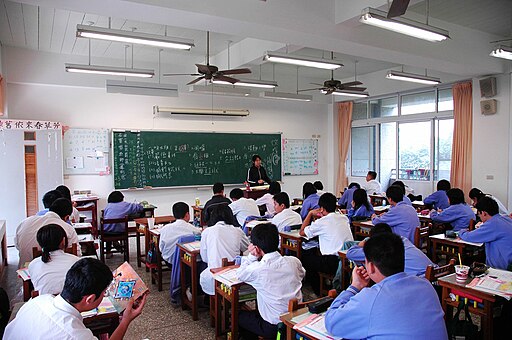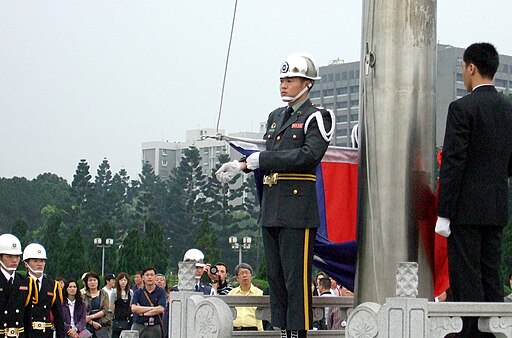
That question seems like it should have a clear answer, as we often assume that an ethnic or national identification is an obvious fact. An NPR news feature recently, though, emphasized the complicated nature of national identity in Taiwan, clearly demonstrating the constructed nature of national identity there. Thus, the context of Taiwan becomes a useful example of the dynamics of the constructed of any national identity, a point many scholars have highlighted for decades.
This question of Taiwanese identity has gained attention because of current geopolitical issues and the ways that the creation of a national identification has shifted in Taiwan. The national election earlier this month in Taiwan has highlighted the tense relation between Taiwan and China. Lai Ching-te of the Democratic Progressive Party, who was elected President, continues to promote the independent sovereignty of Taiwan from China. Naturally, the government of China, which want the reunification of Taiwan with China, opposed Lai’s election and has expressed displeasure that the US State Department, among other world governments, congratulated Lai.
One of the main points of the NPR feature (“How Taiwanese identity has evolved on the island in recent generations”) was the generational shifts in self-identification for people in Taiwan. The majority of Taiwanese trace their family heritage to mainland China, and for decades after the Chinese Nationalist Party established a separate government in Taiwan (after being forced off the mainland in 1949), most Taiwanese continued to identify as Chinese. The government was led by Chinese nationalists, afterall. However, continued conflict with the government of China that threatened the independence of the government in Taiwan has changed that government’s stance. In a related way, the decision for many to identify as Chinese or Taiwanese also has shifted, especially for younger people, who now identify primarily, often exclusively, as Taiwanese.
This significant shift in self-identification, according to those being interviewed, correlated in part to a change in the presentation of history in schools in Taiwan. For a half century after the nationalists declared the independence of Taiwan, the history taught was Chinese history. While it could be seen as undermining the independence argument, it makes sense when we consider that the party that controlled Taiwan was, in name, Chinese nationalist. However, in the 2000s, the education system shifted history courses to focus on Taiwanese history, which contributed to this shift in individual identification with Taiwan. Of interest, in the explanation of the father being interviewed, he recognized the shift in education that influenced his adult daughter’s identification as Taiwanese but did not necessarily (at least in what we hear) see his own identification as Chinese as equally constructed.

One role of education in the modern nation-state is to produce good national citizens, and daily rituals like singing national anthems, displaying images of national leaders and flags, presenting historical narratives, and teaching specific languages, all work together to construct a national identification that becomes so natural that students, graduates, and many of those leading the effort alike hardly notice the effect of those intentional efforts. The national identification is simply taken for granted and can be used to encourage a sense of community between people connected to the same nation (see, for example “Unspoken Nationalism”).
Except when it isn’t so natural. The relatively new emphasis on a national identification as Taiwanese becomes an occasion to observe that construction. Especially when viewed from the outside, different generational responses lead to generational disputes, in part because each see their own identification as natural, as in the family featured in the NPR story. Individual experiences become one explanation for individual identifications, but the broader effort in language and history education are easily overlooked in those individual explanations. Other occasions of contestation are similar, whether it is the debate about the relation between Ukraine and Russia, and particularly Russian-speaking people in Ukraine, or the US debate about constructions of American history (the 1619 Project and the Trump administration’s attempt to counter it with the 1776 Commission). These periods of contestation give a glimpse to the construction of national identity and the ways individual self-perceptions become tied to that national history.
As several of my colleagues in the department emphasize regularly, the historical narrative is not about the past but about negotiating the present, and in the case of Taiwan, the teaching of that history directly relates to the construction of a national identification, now in opposition to Chinese identification and the challenge to Taiwanese sovereignty that it represents. But make no mistake, the government of China is also involved in a deliberate effort to construct a particular notion of Chinese national identification in a process often referred to as Sinicization. For any nation, the question of national identity and fostering commitment to that nation is a vital task that involves national ceremonies, education, and historical narratives, to name a few, but only in some cases are those elements as obvious as they are in contemporary Taiwan.
Image credit: “File:History class in Da Ji Junior High School 2006-11-30.jpg” by Flickr user enixii. is licensed under CC BY-SA 2.0.